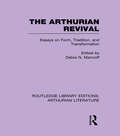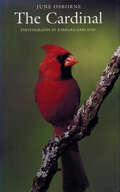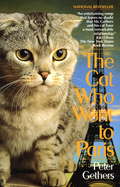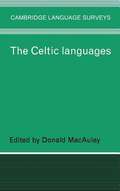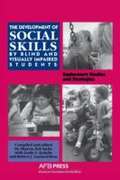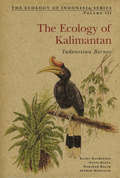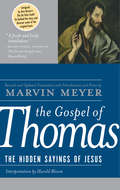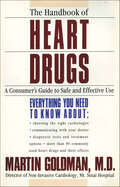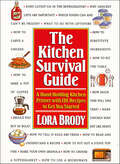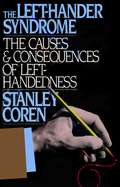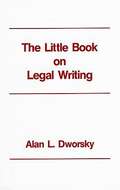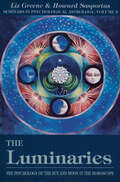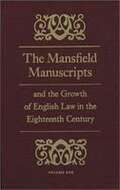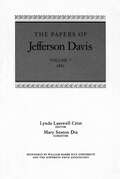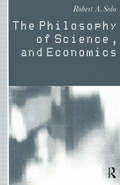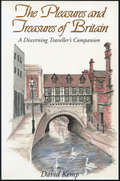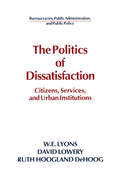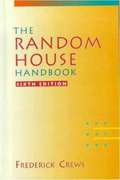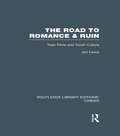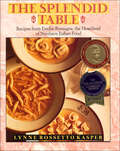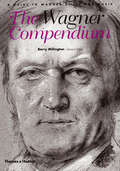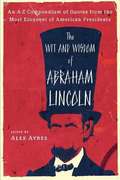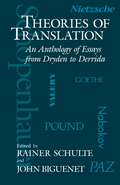- Table View
- List View
The Arthurian Revival: Essays on Form, Tradition, and Transformation (Routledge Library Editions: Arthurian Literature #Vol. 1419)
by Debra N. MancoffDiscrete inquiries into 15 forms of the Arthurian legends produced over the last century explore how they have altered the tradition. They consider works from the US and Europe, and those aimed at popular and elite audiences. The overall conclusion is that the "Arthurian revival" is an ongoing event, and has become multivalent, multinational, and multimedia. Originally published in 1992.
The Cardinal (Corrie Herring Hooks Series)
by June OsborneIn this inviting guide, June Osborne and Barbara Garland follow a year in the life of the Northern Cardinal with a fact-filled text and glowing color photographs. They describe how cardinals stake out territory and choose mates, find a nesting site and incubate their eggs, feed the young and prepare them for full-fledged independence. The Cardinal also explores the special relationship that humans have with their favorite redbirds. Osborne traces the symbolic use of cardinals as state birds (Illinois, Indiana, Kentucky, North Carolina, Ohio, Virginia, and West Virginia) and athletic mascots and shows how they appear on everything from postage stamps to Christmas cards, as well as in fine art, literature, and Native American folklore.
The Cat Who Went to Paris: The Further Adventures Of Norton, The Cat Who Went To Paris And His Human (Norton the Cat)
by Peter Gethers"Norton is clearly a charmer, and Gethers tells his story with contagious affection....Will warm the heart of any confirmed cat-lover."THE WASHINGTON POST BOOK WORLDBefore Peter Gethers met Norton, the publisher, screenwriter, and author was a confirmed cat-hater. Then everything changed. Peter opened his heart to the Scottish Fold kitten and their adventures to Paris, Fire Island, and in the subways of Manhattan took on the color of legend and mutual love. THE CAT WHO WENT TO PARIS proves that sometimes all it takes is paws and personality to change a life.From the Trade Paperback edition.
The Celtic Languages
by Donald MacaulayThis volume describes the six modern Celtic languages. Four of these, Modern Irish, Scottish Gaelic, Welsh and Breton, are living community languages; the other two, Manx and Cornish, survived into the modern period, but are no longer extant as community languages, though they are the subject of enthusiastic revivals. The Celtic languages sets them briefly in their Indo-European context, and states their general relationships within the broader Celtic language family. Individual linguistic studies are first placed briefly in their sociolinguistic and sociohistorical context. A detailed synchronic account of each language then follows, including syntax, morphology, phonology, morphophonology, dialect variation and distribution. Each description is based on a common plan, thus facilitating comparison amongst the different languages. This latest volume in the Cambridge Language Surveys will be welcomed by all scholars of the Celtic languages, but has also been designed to be accessible to any reader with only a basic knowledge of linguistics. It is the only modern account to deal with all surviving Celtic languages in this detail.
The Development of Social Skills by Blind and Visually Impaired Students: Exploratory Studies and Strategies
by Sharon Zell Sacks Linda S. Kekelis Robert J. Gaylord-RossThe book, using an ethnographic approach, outlines the theoretical background of social-skills development, presents case studies and suggests guidelines for helping Blind and Visually Impaired children shape those encounters into satisfying ones.
The Ecology of Kalimantan
by Arthur Mangalik Kathy Mackinnon Hakimah Halim Gusti HattaThe Ecology of Kalimantan starts by examining each of the major ecosystems in Kalimantan and the interrelationships of some of the component species. The book takes a look at Bornean peoples, describing their traditional attitudes to and relationships with their forest environment. The book then examines the potential of different land units for the development of artificial production systems such as agricultural cropping, plantations, and agroforestry, and the development options open for forests, wetlands and coastal resources.
The Gospel of Thomas
by Marvin MeyerA fresh, authoritative English translation, with an informative introduction, fascinating explanatory notes, and the Coptic text, with interpretation by Harold Bloom, our pre-eminent literary critic.
The Gospel of Thomas
by Marvin W. MeyerA fresh, authoritative English translation, with an informative introduction, fascinating explanatory notes, and the Coptic text, with interpretation by Harold Bloom, our pre-eminent literary critic.
The Handbook of Heart Drugs: A Consumer's Guide to Safe and Effective Use
by Martin GoldmanCardiovascular drugs have dramatically changed the way we treat heart disease in the last decade--allowing us to effectively combat hypertension, lower cholesterol, reduce the risk of heart attacks, and, in some cases, even reverse heart disease. Yet, if you are on of the more than 30,000,000 Americans who take heart drugs, chances are you are not getting all the information you need to take these medications safely and effectively. Dr. Martin Goldman has written the first book that deals with all the issues surrounding the use of these life-preserving drugs--how they work on the body's systems and how life-style, diet, and exercise enhance or impede their effectiveness. In clear and accessible prose, using examples from his own practice, Dr. Goldman also presents guidelines for choosing and communicating with your cardiologist, examines the value of new screening tests and procedures, and even shows patients how to keep a cardiovascular diary to monitor their own heart care.The second half of the book provides comprehensive profiles of more than ninety commonly used heart drugs--among them beta blockers, anticoagulants, and antihypertensives--examining their possible side effects; their interactions with food, alcohol, and other drugs' and life-style alterations to consider while using them. This is an indispensable guidebook for anyone concerned about complete cardiac care.
The Kitchen Survival Guide: A Hand-Holding Kitchen Primer with 130 Recipes to Get You Started
by Lora Brody“A particularly engaging” guide to the cooking, shopping and managing your kitchen—the perfect housewarming or wedding shower gift for new home cooks (Library Journal).When Lora Brody, cookbook author, chocolate maven, and mother, sent her sons off into the world, she (and they) realized that they didn't have a clue as to how to feed themselves or their guests, if, heaven forbid, they should have any.The Kitchen Survival Guide is for anyone—newly graduated, newly married, newly single—who is venturing into the kitchen for the first time. With her on-target brand of humor, Lora Brody builds kitchen confidence with more than 130 basic recipes necessary to get through life, as well as hundreds of helpful hints Mom forgot to share, like manual cleaning an oven doesn't mean “that a guy named Manuel will come and clean your oven.” She'll also explain what the difference is between dicing and chopping, zest and pith or au gratin and au lait.Survival recipes include tuna fish salad, homemade chicken soup, brownies, and many more.Setting up a kitchen and keeping it clean and safe, how to buy and store food, a glossary of basic cooking terms, and what to do in the event of a culinary disaster are all covered in this handy, easy-to-use cookbook and kitchen compendium.“A good supplement to the traditional first cookbook.” —Publishers Weekly
The Left-Hander Syndrome: The Causes and Consequences of Left-Handedness
by Stanley CorenNine out of every ten human beings are naturally right-handed. Those who were not right-handed were feared, shunned, or forcibly retrained in many periods and cultures. Indeed, some members of fundamentalist sects still regard left-handers as in league with the devil, and prejudices against left-handers are reflected in the multiple associations of right with good and left with bad that have become enshrined in everyday language and folklore. A “left-handed compliment” is actually an insult, and the dictionary definition of left-handed includes the terms “awkward,” “clumsy,” “ill-omened,” and “Illegitimate.” In his summary of scientific research into sidedness, Stanley Coren rapidly dismisses the notion of the southpaw as somehow tainted. Increasingly we are coming to understand, however, that left-handedness does have social, educational, medical, and psychological implications. Coren uses entertaining examples to illuminate the paths of research he has followed, and answers vitally important questions such as: What are the neuropsychological and behavioral implications of differences for left-handers themselves, as well as for their parents, teachers, spouses, children, counselors, and physicians? How can we determine our own patterns of sidedness? Are they encoded in our genes? And, very importantly, how can we make the world more comfortable and safer for left-handers? Coren persuasively argues that left-handers are an invisible minority who must define themselves and organize for self-protections in the same way that more visible minorities have done. Much (though not all) of the risk to which left-handers are exposed derives from the fact that the tools they use and the machines they operate are designed for right-handers, a flaw that given heightened public awareness would be easy to correct. Coren advocates a change in the way the right-handed majority treats its left-handed minority to eliminate the risks left-handers face.
The Little Book on Legal Writing
by Alan L. DworskyThis book is geared to the kind of writing first-year law students do in a standard legal writing course: memorandums and briefs. However, almost all the advice given applies to other kinds of legal writing as well, such as contracts and pleadings. In fact, much of the advice applies to nonfiction writing in general, because good legal writing is simply good writing. Each subject is broken down into simple, concise sections, making The Little Book on Legal Writing an excellent title for any professor s legal writing course.
The Luminaries: The Psychology of the Sun and Moon in the Horoscope (Seminars in Psychological Astrology #Vol. 3)
by Liz Greene Howard SasportasFrom the founders of the Centre for Psychological Astrology, the third seminar in their series for practitioners discusses sun and moon signs.Liz Greene and Howard Sasportas, psychologists, astrologers and founders of the Centre for Psychological Astrology in London continue their series of seminars with The Luminaries. In this book, they discuss the mythology and psychology of the Moon, showing its relevance as a significator of relationships. In addition, the authors explore in depth the correspondence between the Sun and the development of consciousness. The Luminaries also includes a chapter on the lunation cycle.
The Mansfield Manuscripts and the Growth of English Law in the Eighteenth Century (Studies in Legal History #Vol. 1)
by James OldhamUsing voluminous trial notes and previously unexplored documents, Oldham provides a reappraisal of the judicial career of Lord Mansfield, chief justice of the Court of King's Bench in England from 1756 to 1799. <p><p> In this two-volume work, he presents important biographical information about Mansfield and brings to life the context, personalities, and operational features of the Court of King's Bench during the eighteenth century.
The Mansfield Manuscripts and the Growth of English Law in the Eighteenth Century (Studies in Legal History #Vol. 2)
by James OldhamUsing voluminous trial notes and previously unexplored documents, Oldham provides a reappraisal of the judicial career of Lord Mansfield, chief justice of the Court of King's Bench in England from 1756 to 1799. <p><p> In this two-volume work, he presents important biographical information about Mansfield and brings to life the context, personalities, and operational features of the Court of King's Bench during the eighteenth century.
The Papers of Jefferson Davis: 1861 (The Papers of Jefferson Davis #7)
by Jefferson DavisLynda Lasswell Crist, EditorMary Seaton Dix, CoeditorIntroduction by Frank E. VandiverVolume 7 of The Papers of Jefferson Davis offers a unique view of 1861, the first year of the Confederacy, Davis' presidency, and the Civil War.On January 21 Davis made his affecting farewell speech before a hushed Senate, then left for Mississippi. His uncertainty over a military or political course vanished when he received news of his unanimous election as president of the Confederate States of America. Inaugurated at Montgomery, Alabama, on February 18, Davis quickly set to work to forge a government, in a race with events to select a cabinet, establish departments, and plan for the common defense.Hopes for a peaceful separation from the North ended with the firing on Fort Sumter; subsequent documents reveal a president absorbed by the problems of waging a war that soon stretched from the Atlantic Coast to the Gulf of Mexico. Victory at Manassas produced euphoria among southerners but plunged the president into the first of several unfortunate controversies with his generals, this one over the failure to pursue the enemy and capitalize on success.Throughout 1861 the Confederate commissioners in Europe reported to Davis on their expectations of recognition, convinced that the demand for cotton would induce Great Britain and France to break the North's blockade of southern ports and help supply arms for the defense of the fledgling nation.Volume 7 provides a rare opportunity to assess anew Davis' strengths and weaknesses as executive, to reexamine his relationship with generals, governors, congressmen, cabinet officers, the press, and the public. Davis ended the year as he begun, aware of the difficulties of the course the South had adopted and confident that its cause would ultimately triumph. Containing illustrations, maps, and more than 2,500 documents drawn from numerous printed sources and more than seventy repositories and private collections, Volume 7 covers a year of paramount importance in our country's history.
The Philosophy of Science and Economics
by Robert A. SoloThe philosophy of science proposes criteria to delineate true science and a theory to explain its progress. As a graduate student under the supervision of Lionel Robbins and Karl Popper, Solo first challenged the viability of those criteria and that theory in relation to economics and the social sciences. Here he explains how the foundations of that philosophy have been eroded through the advent of quantum mechanics and through Kuhn's "Structures of Scientific Revolution", and demonstrates its irrelevance to a social science that would comprehend social reality and contribute to the formation of social policy. He proposes a different mode of perception, and different rules for determining the acceptability of statement, a different language of discourse, and a different structure of organization than presently prevails.
The Pleasures and Treasures of Britain
by David KempIs a famous queen of Britain really bured beneath platform 10 at King’s Cross station in London? What is the telephone number of the National Theatre? what is the best place to eat in Worcester? Where is the National Bagpipe Museum? (Hint: not in Scotland) Was Pointius Pilate born in Pitlochry? The answers to these questions and literally thousands more are to be found in David Kemp’s fascinating guidebook, The Pleasures and Treasures of Britain. Nowhere else will the discerning traveller find so much diverse and essential information about British culture gathered together in one volume. With the author as your witty and knowledgeable guide, take a tour through nearly fifty cities, from Penzance to Perth, from London to Cardiff and Belfast. Each city section begins with a concise, readable history and a guided walk around the town, planned to take in as many of the significant local sights as can comfortably be included. Next are exhaustive listings, including telephone numbers and addresses, of everything a culturally curious visitor might want to seek out: theatre, art galleries, museums, antique markets, antiquarian and other bookstores, restaurants, lcoal fairs and festivals and more. Finally, under the headings of Artistic Associations and Ephemera, each section concludes with an entertaining collection of local lore, gossip, legend and anecdote.
The Politics of Dissatisfaction: Citizens, Services and Urban Institutions (Bureaucracies, Public Administration, And Public Policy Ser.)
by David Lowery William E. Lyons Ruth Hoogland DeHoogThe Politics of Dissatisfaction: Citizens, Services, and Urban Institutions is destined to be a classic in public administration and public policy; it makes major theoretical and empirical contributions to the literature in both fields. It is a rigorous empirical attempt to assess the public choice view of citizenship and local government. The research upon which this book is based was founded on conversations between two of its authors, W. E. Lyons and David Lowery, during the early 1980s.
The Random House Handbook (Sixth Edition)
by Frederick CrewsThe Random House Handbook, Sixth Edition offers a comprehensive guide to writing and style, as well as special applications.
The Road to Romance and Ruin: Teen Films and Youth Culture (Routledge Library Editions: Cinema)
by Jon LewisThis book analyses the teen film as the rare medium able to represent the otherwise chaotic and conflicting experience of youth. The author focuses on six major issues: alienation, deviance and delinquency, sex and gender, the politics of consumption, the apolitics of youth(ful) rebellion, and regression into nostalgia. Despite the many differences within the genre, this book sees all teen films as focused on a single social concern: the breakdown of traditional forms of authority – school, church, family. Working with the theories of such diverse scholars as Kenneth Keniston, Bruno Bettelheim, Erik Erikson, Theodor Adorno, Simon Frith, and Dick Hebdige, the author draws an innovative and flexible model of a cultural history of youth. Originally published in 1992.
The Splendid Table: Recipes from Emilia-Romagna, the Heartland of Italian Food
by Lynne R. Kasper“An informed and enthusiastic culinary tour of the northern Italian region of Emilia-Romagna . . . [with] certifiably splendid . . . dishes” —Kirkus Reviews Just when you thought you knew the best of Northern Italy, along comes Lynne Rossetto Kasper to introduce you to Emilia-Romagna, a fertile wedge between Milan, Venice, and Florence, as gastronomically important as any land in the world. The lush homeland of balsamic vinegar, Prosciutto di Parma, tortellini, and Parmigiano-Reggiano cheese, this is a region venerated by Italy's food cognoscenti. “Ask an Italian where to take only one meal in Italy, and, after recommending his mother's house, he will more than likely send you to Emilia Romagna” writes Kasper.The first American book to present the food of this singular northern region, The Splendid Table will take you from Parma, Bologna, Modena, Ravenna, and Ferrara to tiny villages in the foothills of the Apennines, from Renaissance banquet halls to the simplest of farmhouses, offering history, folklore, full-color photographs and substantive cooking tips along the way.With over 200 recipes with wine and menu suggestions, including over thirty desserts and a fifty-six recipe pasta chapter containing many dishes never before seen in America, The Splendid Table will become a good friend, well thumbed and lovingly stained over years of good cooking and good reading.“[Kasper] pays homage to recipes ranging from the 16th century . . . to the eighteenth . . . but pays equal and fascinating attention to modern inventions.” —Publishers Weekly“One of the most informative and irresistible books ever written about the food of Italy.” —Anna Teresa Callen, author of My Love for Naples and Food and Memories of Abruzzo
The Wagner Compendium: A Guide To Wagner's Life and Music
by Barry MillingtonThe unrivaled single-volume survey of Wagner's life and work Edited by one of the leading Wagner scholars of modern times, and with contributions from seventeen experts from around the world, The Wagner Compendium is the key to a complete understanding of the composer-- the most comprehensive, informative and well-organized guide to his life and times. Features include: calendar of Wagner's life, works and related events who's who of Wagner's contemporaries details of historical, intellectual and musical background exploration of Wagner's character and opinions full list of Wagner's prose writings comprehensive listing and discussion of the works
The Wit and Wisdom of Abraham Lincoln
by Alex AyresAbraham Lincoln is the most frequently quoted United States President. In this fascinating compendium are the best, funniest and most profound sayings of this most quotable of Chief Executives. The quotes are arranged according to subject, providing a bit of Lincoln wit and wisdom for any situation. From his youth in pioneer Illinois to the embattled White House of the Civil War, Abraham Lincoln never lost his capacity for dry humor--or his extraordinary gift of eloquence. .
Theories of Translation: An Anthology of Essays from Dryden to Derrida
by Rainer Schulte and John BiguenetSpanning the centuries, from the seventeenth to the twentieth, and ranging across cultures, from England to Mexico, this collection gathers together important statements on the function and feasibility of literary translation. The essays provide an overview of the historical evolution in thinking about translation and offer strong individual opinions by prominent contemporary theorists. Most of the twenty-one pieces appear in translation, some here in English for the first time and many difficult to find elsewhere. Selections include writings by Scheiermacher, Nietzsche, Ortega, Benjamin, Pound, Jakobson, Paz, Riffaterre, Derrida, and others. A fine companion to The Craft of Translation, this volume will be a valuable resource for all those who translate, those who teach translation theory and practice, and those interested in questions of language philosophy and literary theory.
